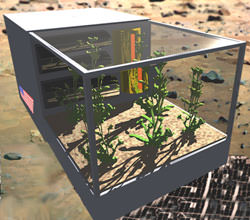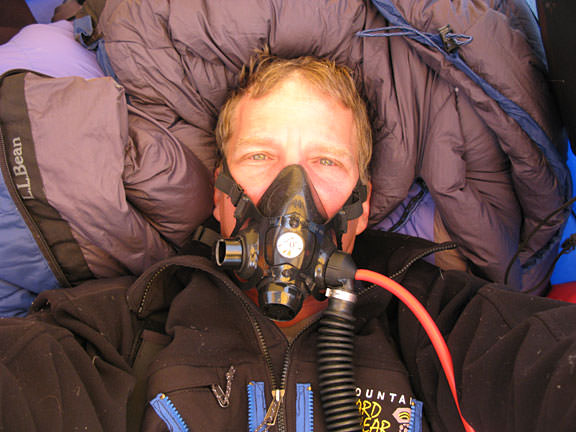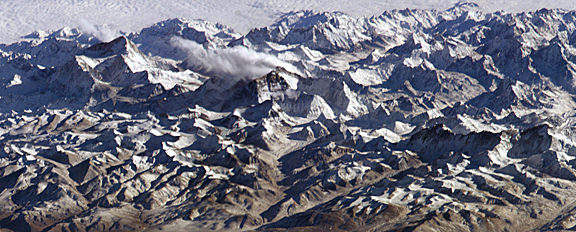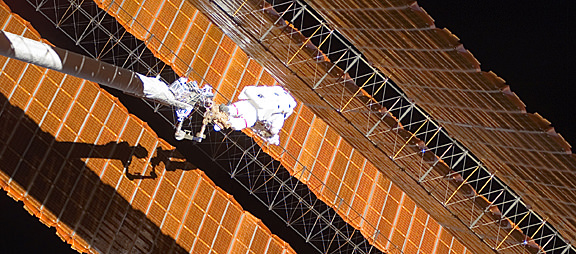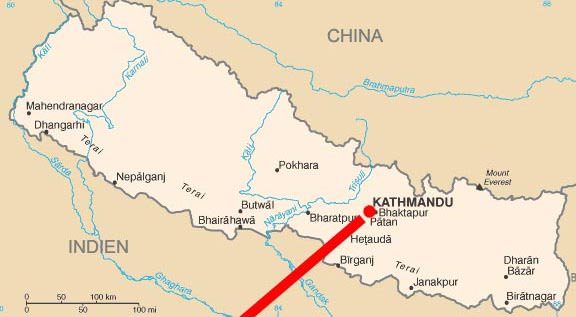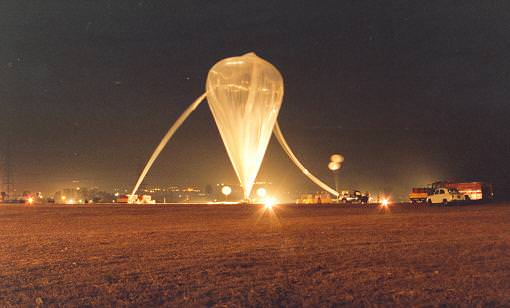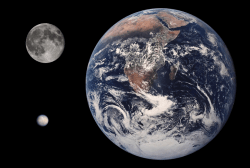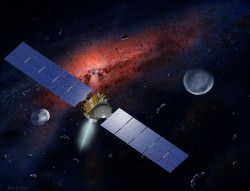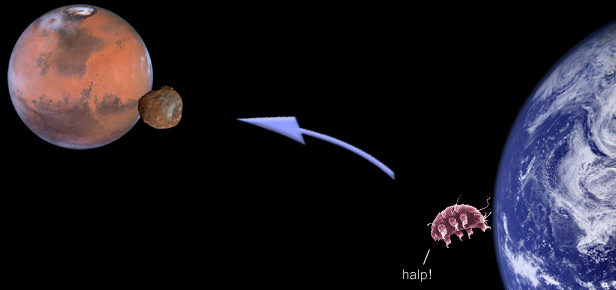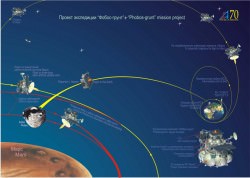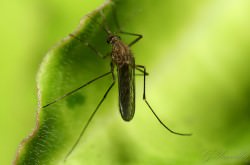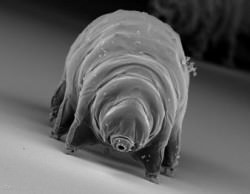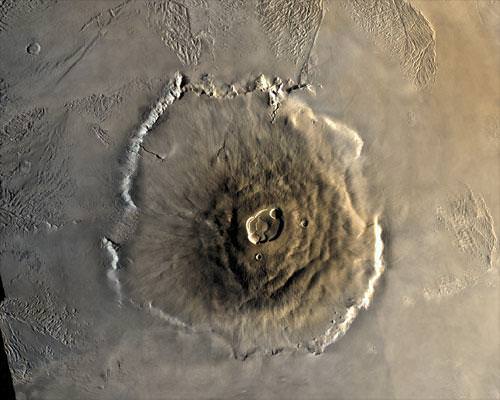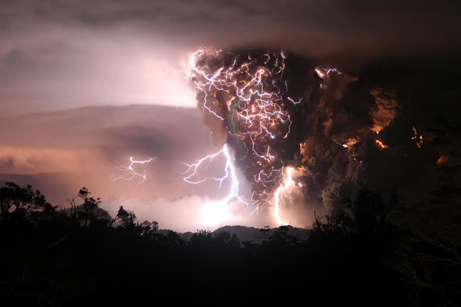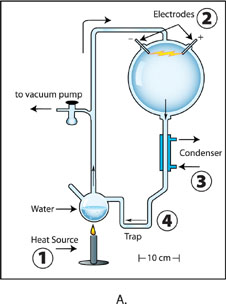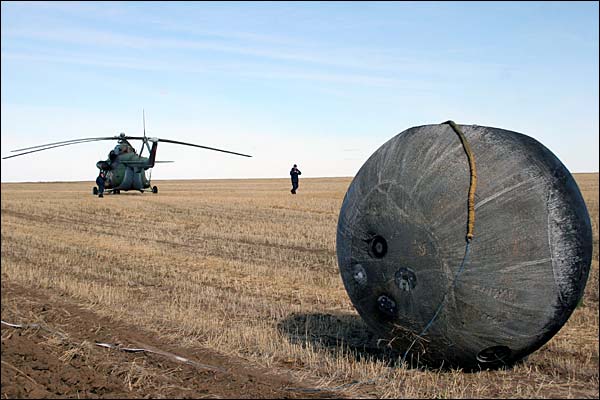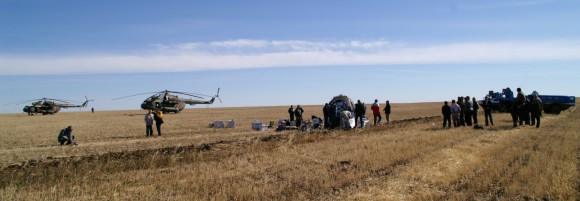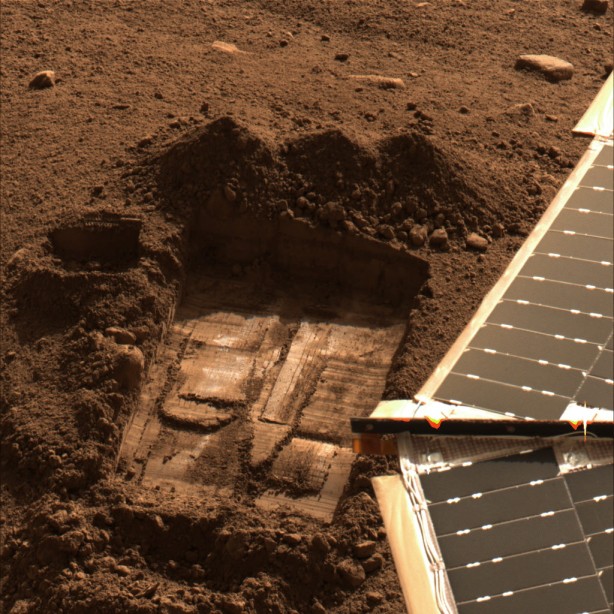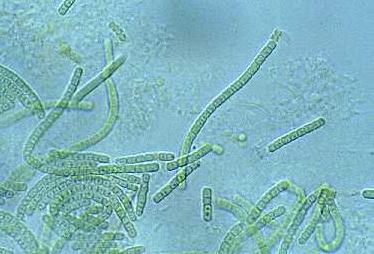[/caption]
“Imagine a bright flower on a green plant in a little dome-shaped growth chamber, sitting on the landscape of the Moon, with the Earth rising up behind,” said Taber MacCallum, CEO of Paragon Space Development Corporation. “I think it’s a great vision.” That vision of the first Moon flower will likely become a reality, perhaps by 2014. Paragon has teamed up with Google Lunar XPRIZE contender Odyssey Moon to deliver a biological greenhouse to the lunar surface. “We’ve grown plants in space before, but this will be the first time we’ll attempt to grow a plant on another world,” MacCallum told Universe Today. “It’s not just a great vision, but interesting science, too.”
Odyssey Moon is one of the teams vying for the $30M Google Lunar X PRIZE, a competition for the first privately funded team to send a robot to the moon, travel 500 meters and transmit video, images and data back to the Earth. One image may be the striking vision the MacCallum described.
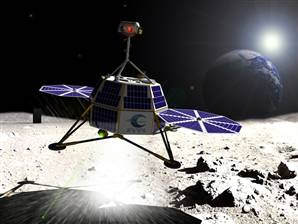
Paragon has been involved with biology in space for several years. They developed the payload that bred the first animals through their life cycle on board the Mir space station, and also were part of the early commercial biology experiments on the ISS. The company is now working with NASA to develop the thermal control and life support systems for the new Orion and Altair spacecraft which will bring humans back to the Moon.
But growing a plant on the Moon, well, that’s just plain cool, says MacCallum.
“It’s interesting science in that, while we’ve obviously grown plants in 1 g and done a fair amount of work in microgravity in space, nobody understand the fractional gravity story,” said MacCallum. “Is one-sixth gravity enough for a plant to behave like it’s on Earth, or is that not enough?”He added this project will also provide information on how to create future larger self contained lunar outposts and eventual settlements, which likely will include greenhouses for growing food for colonists.
Growing the first plant on another world has enormous symbolic importance as well. “We’re doing this partly because of the science, but partly because its an interesting time to be inspiring people on things that aren’t necessarily associated with the economy,” MacCallum said.” Especially in tough economic times we need to inspire people to say, ‘Man that’s cool! What a great country we have that we can do this!’ We also need to inspire kids to take math and science. Kids’ eyes light up when we talk about things like this!”
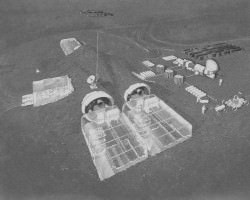
MacCallum and his wife and co-founder of Paragon, Jane Poynter are well known experts in the closed biological systems communities, and were themselves experimental subjects within a sealed ecosystem as resident scientists in the famous Biosphere 2 project of the early 90’s. They spent two years living with six others in a 3.2 acre greenhouse type structure in Oracle, Arizona, the largest closed system ever built.
“Plants have been grown in essentially zero gravity and of course in Earth gravity, but never in fractions of gravity,” said Dr. Volker Kern, Paragon’s Director of NASA Human Spaceflight Programs who conducted plant growth experiments in space on the US Space Shuttle. “Scientifically it will be very interesting to understand the effects of the Moon and one- sixth gravity on plant growth.”
NASA Ames planetary scientist Dr. Chris McKay will also be supporting the project, which is called Lunar Oasis. “The first plant to grow from seed and complete its life cycle on another world will be a significant step in the expansion of life beyond the Earth. The sooner we do it the better,” he said.
MacCallum said there are technical requirements they are still working on for the greenhouse, such as oxygen –CO2 exchange and the right materials that will let in sunlight but block the sun’s harmful rays. “It’s going to be a small growth chamber, but even that is pretty complicated,” he said.
In addition to leading the design of biological payloads, Paragon’s responsibilities on the Odyssey Moon team include robotic lunar lander design support and the lander’s thermal control system.
Source: Paragon, interview with Taber MacCallum
Here’s info on a similar project. Remember Biosphere 2?

